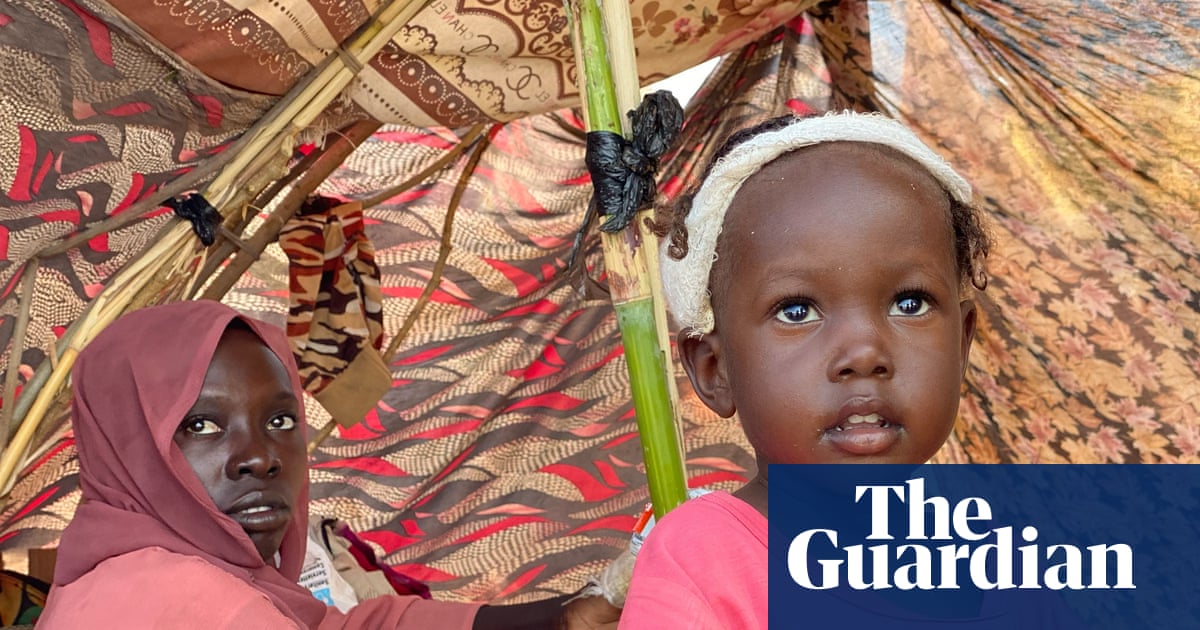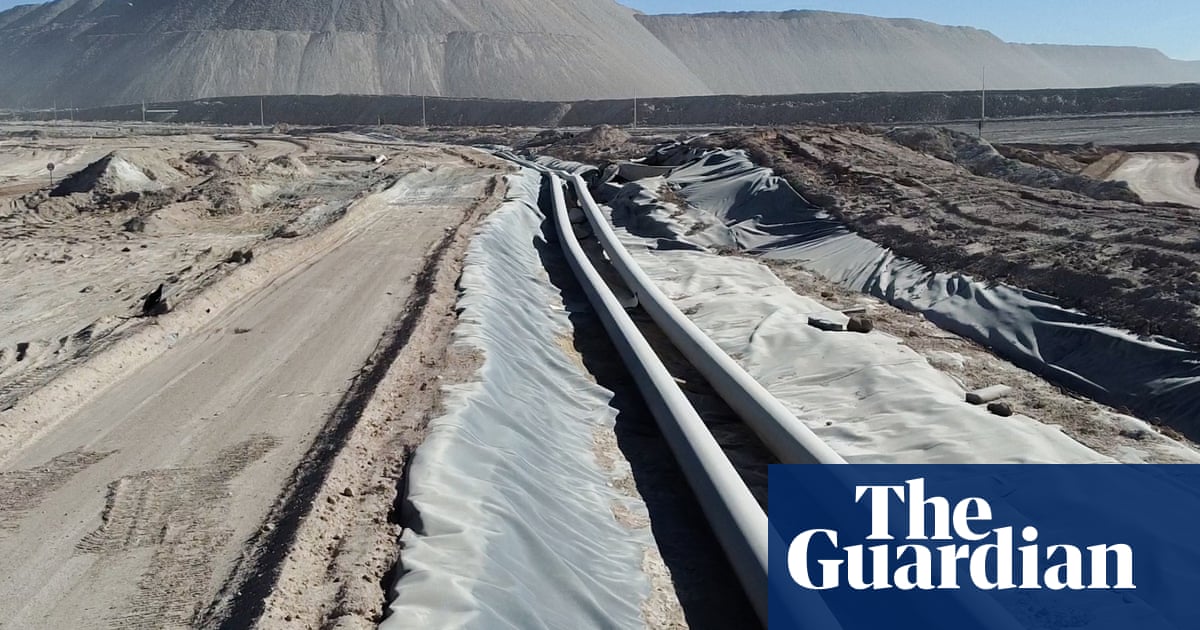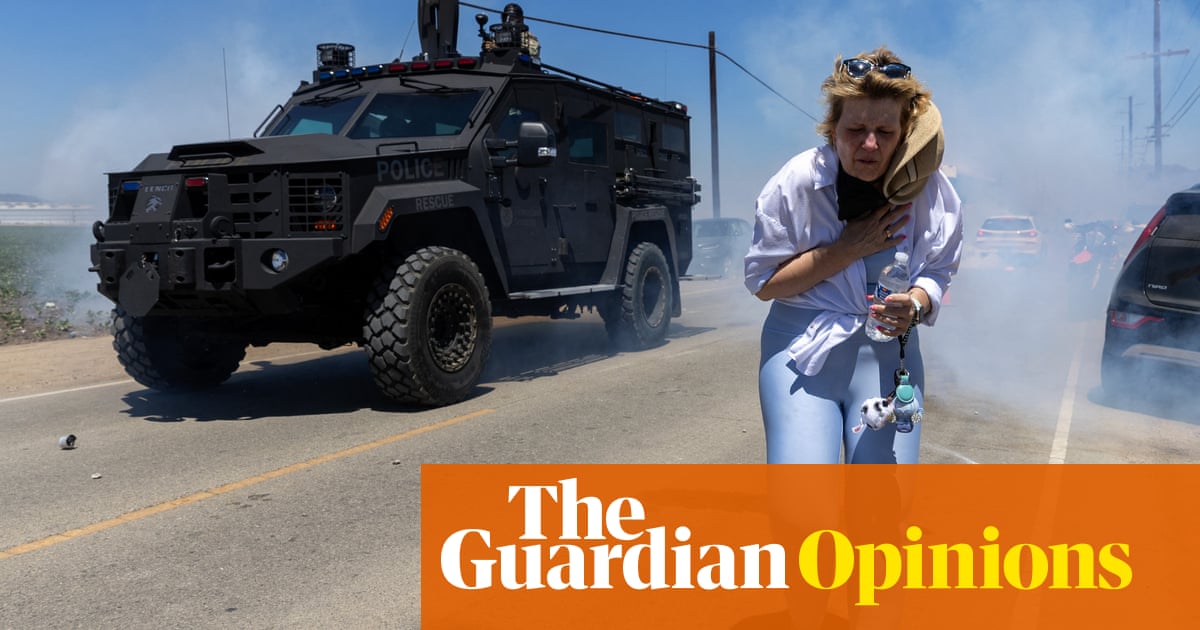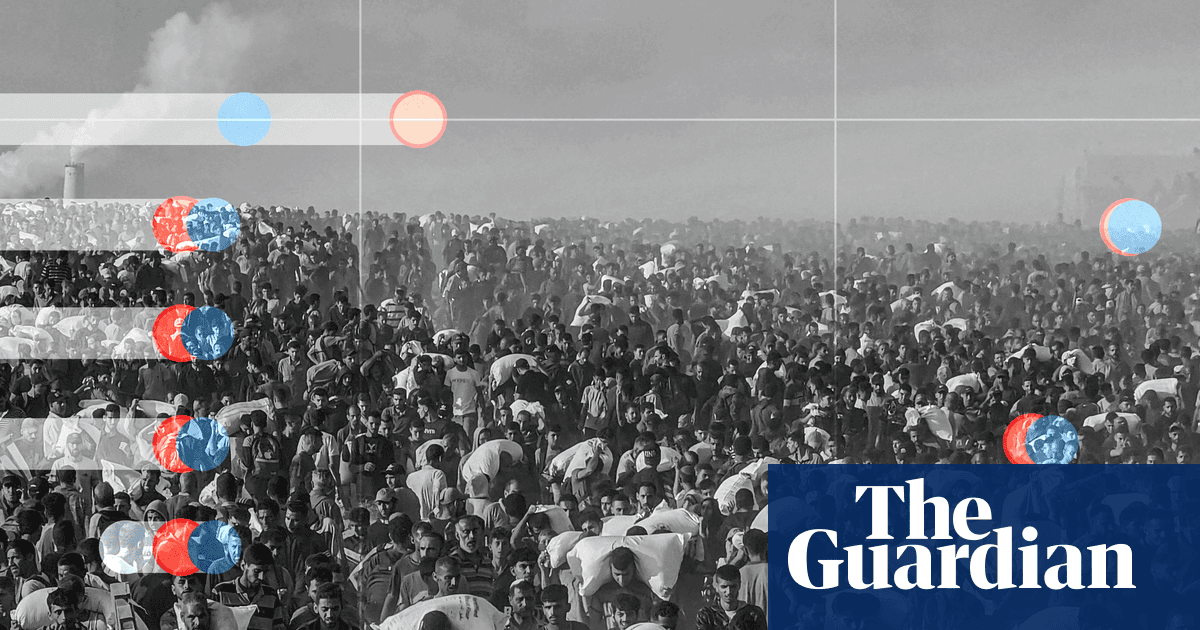Famine now unfolding in Gaza, UN-backed monitor says
Famine is “now unfolding” in Gaza, with thousands of children malnourished and hunger-related deaths on the rise among the youngest, a UN-backed monitor has said in an alert.
The Integrated Food Security Phase Classification Initiative (IPC) said that airdrops over Gaza will not avert the “humanitarian catastrophe” unfolding across the territory.
“The worst-case scenario of famine is now unfolding in the Gaza Strip,” said the UN-backed group of organisations, used as a monitor to gauge malnutrition.
“Immediate, unimpeded” humanitarian access into Gaza was the only way to stop rapidly rising “starvation and death”, it added.
The alert, which is not a formal designation of famine in Gaza, from the IPC said:
Mounting evidence shows that widespread starvation, malnutrition, and disease are driving a rise in hunger-related deaths …
Latest data indicates that famine thresholds have been reached for food consumption in most of the Gaza Strip and for acute malnutrition in Gaza City.
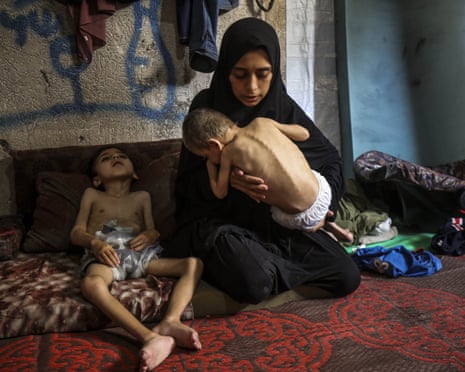
Key events Show key events only Please turn on JavaScript to use this feature
The Integrated Food Security Phase Classification, or IPC, said Gaza has teetered on the brink of famine for two years, but recent developments have “dramatically worsened” the situation, including “increasingly stringent blockades” by Israel.
A formal famine declaration, which is rare, requires the kind of data that the lack of access to Gaza and mobility within has largely denied. The IPC has only declared famine a few times — in Somalia in 2011, South Sudan in 2017 and 2020, and parts of Sudan’s western Darfur region last year.
But independent experts say they don’t need a formal declaration to know what they’re seeing in Gaza.
Speaking to the Associated Press, Alex de Waal, author of Mass Starvation: The History and Future of Famine and executive director of the World Peace Foundation, said:
Just as a family physician can often diagnose a patient she’s familiar with based on visible symptoms without having to send samples to the lab and wait for results, so too we can interpret Gaza’s symptoms. This is famine.
What is the technical definition of famine?
Lizzy Davies
Lizzy Davies is the Guardian’s European news editor
In 2004, the UN’s Food and Agriculture Organization developed the Integrated Food Security Phase Classification (IPC), as a tracking tool for global hunger. It has become the primary means of identifying famine, with a sliding scale from phase 1 (no or minimal food insecurity) to phase 5 (catastrophe or famine).
It defines a famine as an extreme deprivation of food where “starvation, death, destitution and extremely critical levels of acute malnutrition are or will likely be evident”.
To meet the criteria, an area will have at least 20% of households facing an extreme lack of food, at least 30% of children suffering from acute malnutrition, and two people for every 10,000 a day dying “due to outright starvation or to the interaction of malnutrition and disease”.
If a number of households are experiencing famine conditions but not at the required level (20% of the population), or if local malnutrition or mortality levels have not reached the required thresholds for famine, those households will be put in the IPC phase-5 catastrophe category, even if the area as a whole is not in phase-5 famine.
Trump acknowledges ‘real starvation’ in Gaza and tells Israel to let in ‘every ounce of food’
Donald Trump on Monday told Israel to allow “every ounce of food” into Gaza as he acknowledged for the first time that there is “real starvation” in the region.
During a visit to Britain, the US president contradicted Benjamin Netanyahu after the Israeli prime minister claimed it was a “bold-faced lie” to say Israel was causing hunger in Gaza.
Trump is under increasing pressure to intervene in the humanitarian crisis, with dozens of Palestinians having died of hunger in recent weeks in a crisis attributed by the UN and other humanitarian organisations to Israel’s blockade of almost all aid into the territory…
The US president told reporters that Israel bore “a lot of responsibility” for the crisis in a rebuke to Netanyahu, who had claimed earlier on Monday that there was “no starvation in Gaza”.
Asked whether he agreed with this assessment, Trump said: “I don’t know. Based on television, I would say not particularly, because those children look very hungry.”
He later added: “We can save a lot of people, I mean some of those kids. That’s real starvation; I see it and you can’t fake that. So we’re going to be even more involved.”
Asked what he would ask Netanyahu for next time they spoke, Trump said: “We’re giving money and we’re giving food, but we’re over here … I want him to make sure they get the food. I want to make sure they get the food, every ounce of food.”
You can read the full report by my colleagues Eleni Courea and Libby Brook here:
Gaza’s health ministry said on Monday that hospitals in the Strip had recorded 14 new deaths in the past 24 hours due to famine and malnutrition.
This brought the total number of deaths due to malnutrition to 147, including 88 children, since the start of the war in 2023.
Famine now unfolding in Gaza, UN-backed monitor says
Famine is “now unfolding” in Gaza, with thousands of children malnourished and hunger-related deaths on the rise among the youngest, a UN-backed monitor has said in an alert.
The Integrated Food Security Phase Classification Initiative (IPC) said that airdrops over Gaza will not avert the “humanitarian catastrophe” unfolding across the territory.
“The worst-case scenario of famine is now unfolding in the Gaza Strip,” said the UN-backed group of organisations, used as a monitor to gauge malnutrition.
“Immediate, unimpeded” humanitarian access into Gaza was the only way to stop rapidly rising “starvation and death”, it added.
The alert, which is not a formal designation of famine in Gaza, from the IPC said:
Mounting evidence shows that widespread starvation, malnutrition, and disease are driving a rise in hunger-related deaths …
Latest data indicates that famine thresholds have been reached for food consumption in most of the Gaza Strip and for acute malnutrition in Gaza City.

Israel imposed a total aid blockade for 11 weeks starting in March (ostensibly to put pressure on Hamas to release hostages), and the trickle of food, fuel and medical supplies allowed in since May has not relieved extreme hunger.
Israel has been widely accused of using food as a political weapon and of flagrantly breaking international law by collectively punishing the civilian population by its aid blockade.
Israeli prime minister Benjamin Netanyahu has said that Israel is not conducting a campaign of starvation in Gaza, calling the accusation “a bold faced lie”.
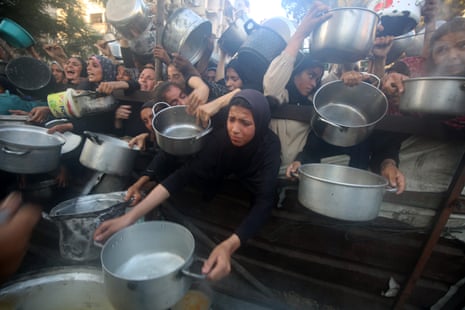
Responding to a global outcry provoked by reports and images of widespread starvation and malnutrition in Gaza, the Israeli military said on Sunday that it had began a “tactical pause” in the densely populated areas of Gaza City, Deir al-Balah and Muwasi to “increase the scale of humanitarian aid” into the strip.
It said the pause would be repeated every day from 10am to 8pm local time until further notice. Today is due to bring the third of these pauses.
Israeli attacks have continued across the territory, however, with Israeli forces having killed at least 92 Palestinians in Gaza on Monday, including 41 people seeking food, according to reports.
Using airdrops to deliver aid is 'futile initiative that smacks of cynicism', MSF says
We are continuing our live coverage of Israel’s war on Gaza as international pressure on Israel to allow more aid into the territory continues to grow amid reports of widespread starvation and malnutrition.
Médecins Sans Frontières (MSF) has condemned the use of airdrops to deliver desperately needed aid to Gaza, calling the approach “futile” and “cynical”.
Jean Guy Vataux, MSF’s emergency coordinator in Gaza, called for Israel to allow for the full access of humanitarian aid that he says is ready to be delivered across the border by road.
He warned that airdrops are “notoriously ineffective and dangerous” as they can’t carry much aid and can injure (or even kill) people when they are dropped.
In a post on X, Vataux wrote:
Using airdrops for the delivery of humanitarian aid is a futile initiative that smacks of cynicism.
The roads are there, the trucks are there, the food and medicine are there, everything is ready to bring humanitarian aid to Gaza just a few kilometres away.
All that is needed is for Israeli authorities to decide to facilitate its arrival - expedite the clearance procedures, allow the entry of goods at scale, and coordinate to permit safe collection and delivery. Only then can we begin to resolve the starvation we are seeing …
At the moment, two million people are trapped in a tiny piece of land, which makes up just 12 per cent of the whole Strip - if anything lands in this area, people will inevitably be injured.
On the other hand, if the airdrops land in areas where Israel has issued displacement orders, people will be forced to enter militarised zones – once again risking their lives for food.
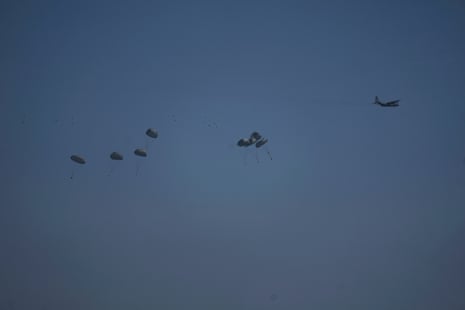
Israel says more than 200 aid trucks were collected and distributed yesterday by aid agencies, and that an additional 260 trucks entered Gaza and are awaiting collection.
This is in addition to airdrops carried out by Jordan, the UAE and Israel, which parachuted aid packages into the territory for the first time in months over the weekend. Charities say this aid is totally inadequate for the needs of Gaza’s population.
Stick with us as we give you the latest updates and analysis throughout the day.

 3 months ago
39
3 months ago
39















